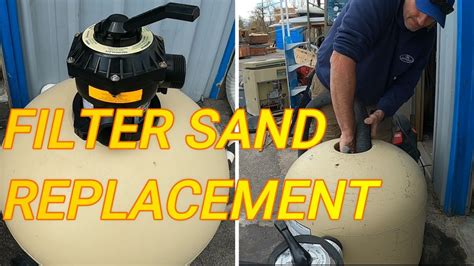Transform Your Pool: Remove Sand Today
Tired of that gritty feeling underfoot? Is your pool filter constantly struggling, and are you spending a fortune on maintenance? Sand in your pool is more than just an inconvenience; it can severely impact the longevity and enjoyment of your aquatic oasis. This comprehensive guide will walk you through the process of removing sand from your pool, offering solutions for various scenarios and helping you achieve crystal-clear, sparkling water.
Why is Sand in My Pool Such a Big Deal?
Sand in your pool is a common problem, often stemming from several sources:
- Wind: Strong winds can carry sand from nearby construction sites, beaches, or even your own backyard.
- Poorly Maintained Equipment: Cracks in your pool's plumbing or filter can allow sand particles to enter the water.
- Improper Backwashing: Insufficient backwashing of your filter can leave sand trapped within, leading to eventual release into the pool.
- Construction Nearby: Construction projects near your pool are a significant source of sand contamination.
- Accidental Introduction: Sand can be accidentally introduced during cleaning or maintenance activities.
Leaving sand in your pool can lead to:
- Filter Damage: Sand can clog and damage your pool filter, leading to costly repairs or replacements.
- Cloudy Water: Sand particles make the water cloudy and unattractive.
- Abrasion: Sand can scratch and damage your pool's finish, leading to premature deterioration.
- Increased Chemical Use: You may need to use more chemicals to maintain water clarity and balance.
How to Remove Sand from Your Pool: A Step-by-Step Guide
Removing sand requires a multi-pronged approach. Here's a detailed guide to help you get your pool sparkling clean again:
1. Identify the Source of the Sand
Before you start cleaning, take time to identify the source. This will help prevent future contamination. Is it windborne sand? Is there a leak in your plumbing? Addressing the source is crucial for long-term success.
2. Vacuuming the Pool Floor
This is the first and most obvious step. Use your pool vacuum with the finest filter setting available to thoroughly vacuum the entire pool floor, focusing on areas where sand is most concentrated. Regular vacuuming is key to preventing sand buildup.
3. Backwashing Your Filter
Thoroughly backwash your filter according to the manufacturer's instructions. This will remove any trapped sand from the filter media. Regular backwashing is crucial to maintain your filter's efficiency and prevent sand from entering the pool.
4. Cleaning Your Pool Filter
After backwashing, inspect your filter for any damage. Replace or repair any cracked or damaged components to prevent further sand contamination.
5. Chemical Treatment
Consider adding clarifying agents or flocculants to your pool water. These chemicals bind together small sand particles, making them easier to remove through filtration. Always follow the manufacturer's instructions carefully.
6. Using a Pool Robot
For a more efficient and thorough cleaning, consider using a robotic pool cleaner. Many models are specifically designed to remove fine particles like sand.
Frequently Asked Questions (FAQs)
What if the sand is very fine and difficult to remove?
For very fine sand, a combination of thorough vacuuming, backwashing, and the addition of clarifying agents is usually the most effective. Consider repeating the vacuuming and backwashing process several times.
Can I use a regular household vacuum cleaner to clean my pool?
No, you should never use a household vacuum cleaner in your pool. These vacuums are not designed for underwater use and can be severely damaged or even cause electrical shock.
How often should I backwash my pool filter?
The frequency of backwashing depends on several factors, including the size of your pool, the amount of debris, and your filter type. Consult your filter's manual for specific recommendations, but generally, backwashing every week or two is a good starting point.
My pool still looks cloudy after I've followed all these steps. What should I do?
If your pool remains cloudy even after following all the steps, you may have a more serious problem, such as a leak in your plumbing or a malfunctioning filter. It's best to contact a professional pool service technician to diagnose and address the issue.
Conclusion
Removing sand from your pool is a crucial part of maintaining a clean, healthy, and enjoyable swimming environment. By following the steps outlined above and addressing the root cause of the contamination, you can restore your pool to its former glory. Remember that preventative measures, such as regular cleaning and filter maintenance, are key to preventing future sand build-up. Enjoy your sparkling clean pool!

